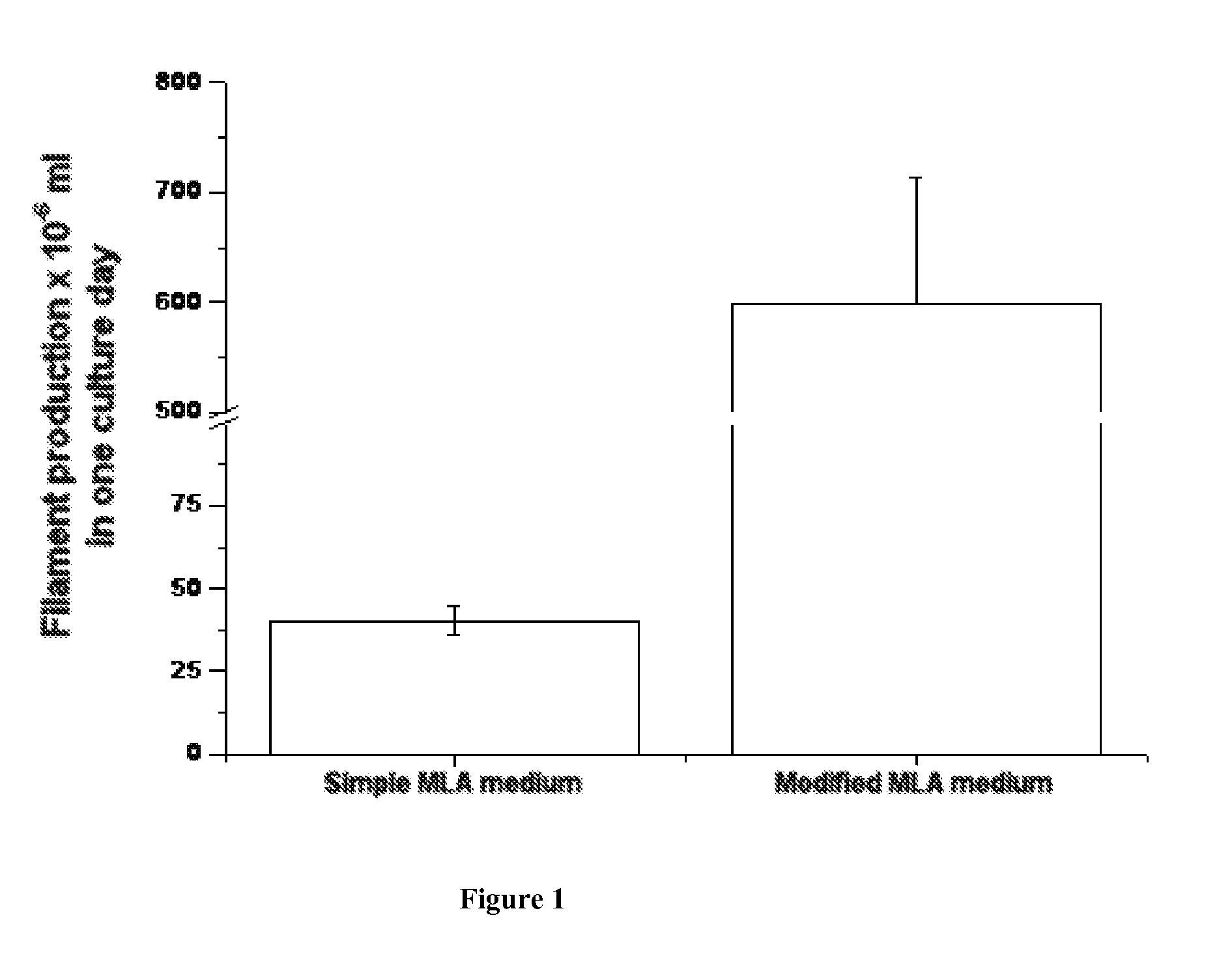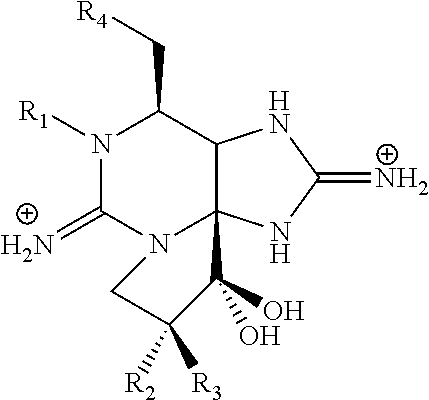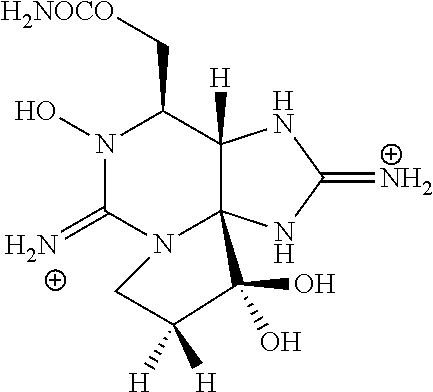Methods for producing phycotoxins
a technology of phycotoxins and phycotoxins, applied in the field of methods of producing phycotoxins, can solve the problem of not being able to obtain the necessary quantities of compounds commercially, and achieve the effect of reducing the quantity of compounds
- Summary
- Abstract
- Description
- Claims
- Application Information
AI Technical Summary
Benefits of technology
Problems solved by technology
Method used
Image
Examples
example 1
Preparation of Culture Media
[0044]To prepare the culture medium, concentrated stock solutions of micronutrients, mineral salts and vitamins were prepared. All solutions were prepared with distilled water.
[0045]The Vitamin Stock Solution (Solution A) was prepared according to the amounts provided in Table 1:
TABLE 1Composition of the Vitamin stock Solution (Solution A)FinalConcentrationVolumeconcentration(mg / ml)(ml)(mg / ml)Biotin0.10.050.00005Vitamin B120.10.050.00005Thiamine HCl0.1
[0046]1 mg of biotin was dissolved in 10 ml of distilled water. Similarly, 1 mg of vitamin B12 was dissolved in 10 ml of distilled water. 0.05 ml of each of these two solutions was mixed with 10 mg of thiamine HCl and distilled water to a final volume of 100 ml.
[0047]The Micronutrient Stock Solution (Solution B) was prepared from primary solutions of CuSO4.5H2O (1 g / l), ZnSO4.7H2O (2.2 g / l), CoCl2.6H2O (1 g / l), NaMoO4.2H20 (0.6 g / l).
[0048]10 ml of each primary solution was added to 800 ml of the solution des...
example 2
Culture of Aphanizomenon (Aph) gracile (Lemm) Lemm
[0056]Each reactor containing 3 liters of the culture medium described in Example 1 was inoculated with 35 million filaments of Aphanizomenon (Aph) gracile (Lemm) Lemm. The reactors were maintained at a temperature of 22° C.±2° C., with permanent illumination from fluorescent tubes. Once the culture reached the exponential phase, one-third of the total reactor volume was collected (1 liter) and replaced with 1 liter of fresh medium. The culture had a doubling time of 0.33 times per day.
[0057]The removed culture medium containing cyanobacteria was centrifuged at 10,000 g for 20 minutes.
[0058]The yields obtained are expressed as a function of the number of filaments, since the presence of filaments (association of individual cells) is an indicator of the quality of the culture and of the permanent reproduction and development of the cells. A filament-rich culture is a “healthy” culture and is in permanent development. The cell pellet ...
example 3
Comparison of the Culture with Simple (Unmodified) MLA Medium and the Modified MLA Medium of the Present Invention
[0060]FIG. 1 shows the difference between a culture of Aphanizomenon gracile in the simple (unmodified) MLA medium and a culture of Aphanizomenon gracile with the modified MLA culture medium containing the additives to promote production of neosaxitoxin and saxitoxin. The addition of arginine, methionine, and allantoic acid resulted in a significant increase in filament production which results in an increase in phycotoxin production.
[0061]Table 8 shows the concentration of the different phycotoxins in the supernatant and the yield of cyanobacterial filaments. Table 8 also indicates the concentration of filaments per ml of culture medium.
TABLE 8Concentration of the different phycotoxins in the supernatant andthe yield of cyanobacterial filamentsConcentration ofConcentration in thephycotoxin persupernatantfilamentneoSTXSTXneoSTXSTXneoSTXSTXCyano.mMmMμg / mlμg / mlpg / fil.pg / fi...
PUM
 Login to View More
Login to View More Abstract
Description
Claims
Application Information
 Login to View More
Login to View More - R&D
- Intellectual Property
- Life Sciences
- Materials
- Tech Scout
- Unparalleled Data Quality
- Higher Quality Content
- 60% Fewer Hallucinations
Browse by: Latest US Patents, China's latest patents, Technical Efficacy Thesaurus, Application Domain, Technology Topic, Popular Technical Reports.
© 2025 PatSnap. All rights reserved.Legal|Privacy policy|Modern Slavery Act Transparency Statement|Sitemap|About US| Contact US: help@patsnap.com



